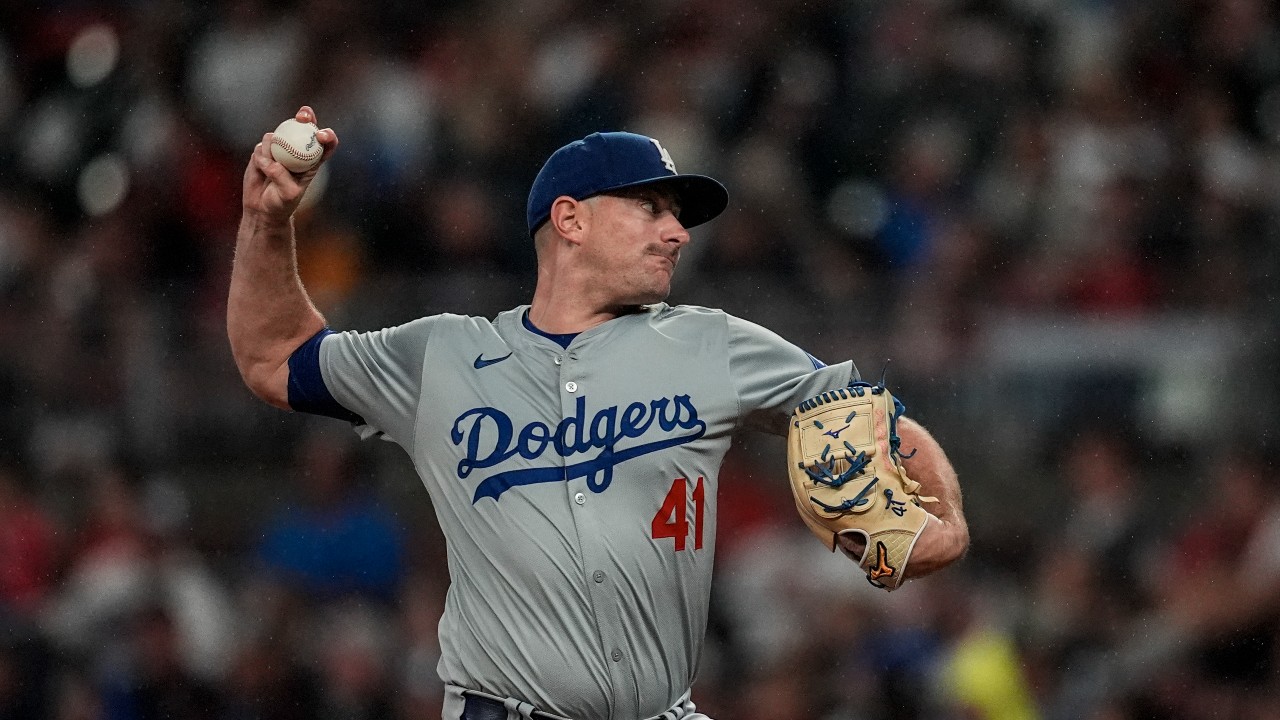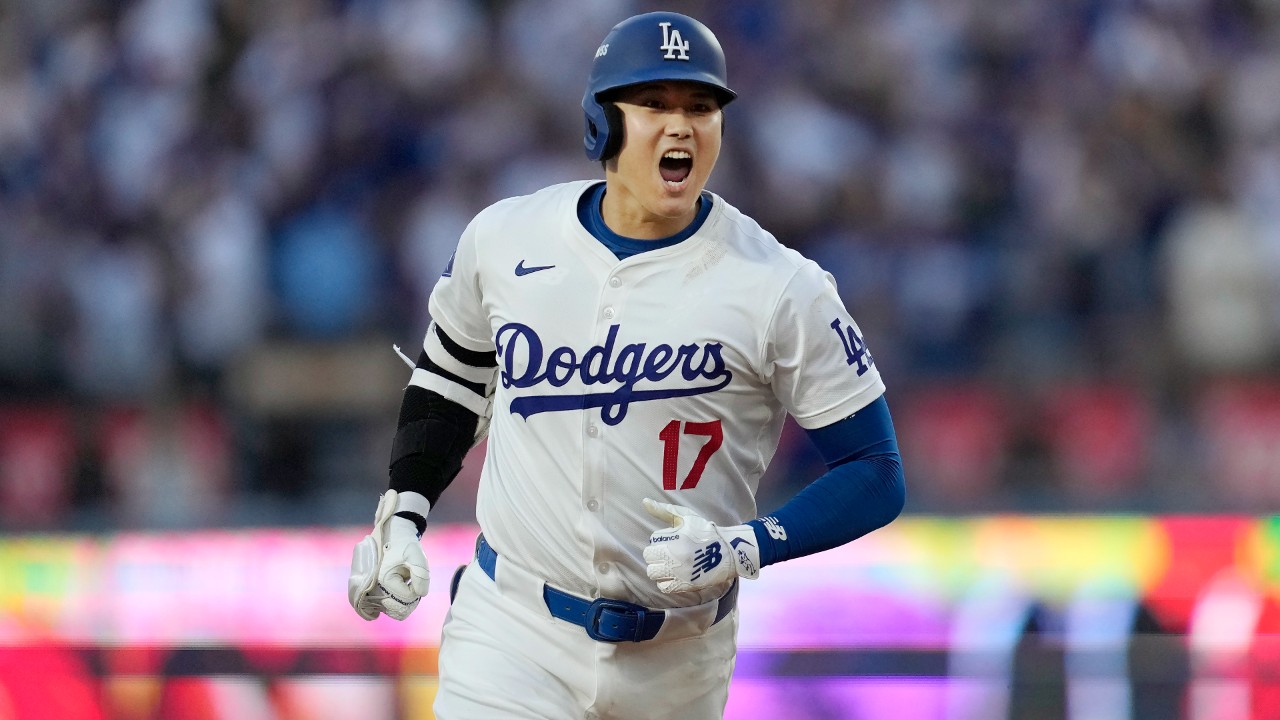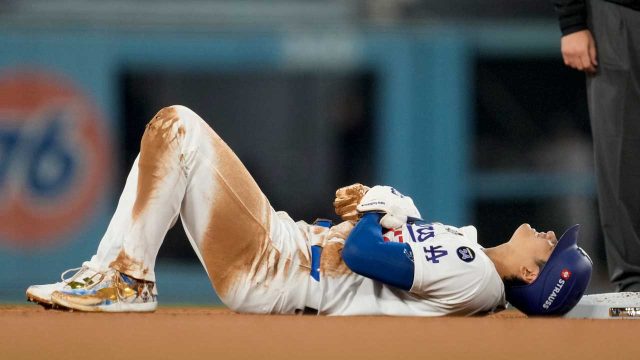
Upon joining the Los Angeles Dodgers after a December trade from the Tampa Bay Rays, Tyler Glasnow immediately noticed something about the way the two clubs run their pitching programs.
“A lot of it is insanely similar,” says the All-Star right-hander, who is missing the World Series due to an elbow sprain. “When I first got over here, it was like, wow.”
Given that Andrew Friedman, the Dodgers’ president of baseball operations the past 10 seasons, spent 11 years with the Rays, nine of them as their executive vice-president of baseball operations, that shouldn’t be surprising. But the financial might in L.A. also allows Friedman to do things that were always out of reach in Tampa Bay.
“Philosophy-wise the Rays, because the nature of their market, you work with what you can get,” explains Glasnow. “So you’ll get these guys who maybe have been passed on and then it’s like, you have good stuff, let’s try to get you in the zone and for the most part it creates probably more success for that individual. Here it’s a little bit more of the same, like stuff, but it’s also incorporating a little bit more corner (of the zone), certain pitch usages and stuff like that. The ability to go out and sign whoever is very helpful, as well, you can create this really good team and the coaches and the advanced scouting and everything here is insanely good. It’s great.”
That combination is a big reason why the Dodgers are, in many ways, the industry standard when it comes to pitching. Between 2015 and 2022, they had the lowest ERA in the majors four times, the second lowest twice and the fifth lowest twice. In 2023 and ’24, when they suffered enough injuries to capsize most clubs, they still ranked 13th last year and 10th this year.
|
Season |
ERA |
Rank |
Season |
ERA |
Rank |
|
2015 |
3.44 |
5th |
2020 |
3.02 |
1st |
|
2016 |
3.70 |
5th |
2021 |
3.01 |
1st |
|
2017 |
3.38 |
2nd |
2022 |
2.80 |
1st |
|
2018 |
3.38 |
2nd |
2023 |
4.06 |
13th |
|
2019 |
3.37 |
1st |
2024 |
3.90 |
10th |
Resources are certainly a factor, as the Dodgers always have access to the top available talent, but the past two seasons have been demonstrative of how they do such a good job of maximizing everyone on the roster, too.
What makes them so successful?
“The information is the information every team has – it’s not like they have access to some special metric that no other team does,” says Dodgers right-hander Daniel Hudson, the 37-year-old reliever who’s been in seven organizations, including the Toronto Blue Jays in 2019, over his 15 seasons in the majors. “They do a really good job of communicating. I know what I do really well on the mound, but they communicate on where my stuff plays the best in the strike zone with certain hitters. For the most part, every single game, they have an idea how the game-script is going to go.
“Obviously, things can go haywire and they have to go Omaha audible from there. But for the most part, they try to stick to the game-script and stick to the certain parts of the lineup that you’re going to be successful with. Whether that’s 9-1-2 or 6-7-8 based on the lineup that night, the pinch-hitters and all that stuff, they have all that ready to go, whatever we need to use, they have it ready to go. That’s pretty special.”
Here’s a look at some elements that drive the Dodgers’ success on the mound:
Player acquisition and coaching
Sure, the Dodgers do big-game hunting as well as any team in the majors, with Glasnow and Yoshinobu Yamamoto a couple of the most recent examples. But, as Glasnow mentioned, they also excel at periphery roster moves, too, which is why they’re able to amass admirable depth and survive inevitable attrition.
Take lefty Anthony Banda, who bounced around 10 organizations in 13 years of pro ball before the he was purchased from Cleveland in May, and is now up to eight post-season outings, including in both games of the World Series thus far.
He’d always been talented, with a big-velo fastball and a solid changeup, but he’d never found a way to make it work until he got to L.A., where assistant pitching coach Connor McGuiness helped an unlock a difference-making slider.
“That’s what’s so special about the Dodgers, they see what others see and they exploit the strength in individuals,” says Banda. “I think it has a lot to do with the understanding and the communication from coach to player, player to coach. … That way they can voice whatever it is they need to exploit as far pitches or movement types or anything else like that. That’s what they do very well here, given the fact that (they have) all the analytics and everything else like that to back that up.”
Banda had spun his wheels because he lacked a pitch that would cut in on righties, which allowed them to wait him out for either a sinker or changeup on the outer edge. The slider he arrived with wasn’t trustworthy, but McGuiness broke down the way he was throwing it with Edgertronic video that for the first time helped him understand why it didn’t work.
“I always thought my throw had to be specific to fit the slider and that’s what I was told in different organizations, so I stayed on the track of throwing a changeup because it was just easier, just a natural fit with a heavy pronated arm action,” says Banda. “Connor showed me a spike grip and he gave me the idea of throwing it with like a hula-hoop arm path, trying to keep my hand vertical and let it work off pronation. When he said that, I was like, ‘What do you mean?’ And he said, ‘Well, you spin the ball through your pronation.’ A lot of people think you’ve got to get to the front of the baseball. Some people do. But you have to pronate at the end to decelerate. When he got me thinking that way, I know it sounds like a lot, but it’s very simple in the sense of like how my arm works and what I feel. So what he explained matched what I was feeling. And it just took right away.”
Banda produced half-a-win in value while logging 49.2 innings over 48 games, with a 3.08 ERA and 50 strikeouts, all career-bests. Lefties had just a .552 OPS against him and righties a manageable .739. That type of performance had been in there all along, waiting to be unlocked.
“Maybe I just misunderstood. Maybe it was just a different way of messaging, I don’t know,” he said of his experience with other clubs. “With Connor it was just an easy conversation where it was very understandable and I got it right away. When I put it to work, it was there, almost like I’ve done it my entire life, when I really was trying to seek it for my entire career.”
Game planning
When he first reached the majors with the Pittsburgh Pirates and then in his first three years with the Rays, Glasnow was mostly a fastball-curveball pitcher.
“What you see is what you get,” he said.
In 2021 he added a slider to the mix, his usage of a three-pitch repertoire has been relatively stable since and the Dodgers didn’t suggest he alter that.
Pitching coach Mark Prior, whose work is described by Glasnow as centring around in-game experience, and McGuiness, whose expertise is on the data and pitch-shaping side, felt he should avoid “being too predictable.”
“Like if I did this one way three games in a row, switch it up and depending on the lineup and what usages are better, switch up pitch-calling,” he continues. “It’s just more about that.”
Hudson appreciates the way the Dodgers tailor information to his needs.
When he’s set to face a hitter he’s familiar with, he tends to already have an attack plan, “but if there’s a pinch-hitter that I’m not really sure of, there are certain numbers that I like to look at before I go in, whether it’s first-pitch swing percentage on this pitch or that pitch with runners in scoring position, bases empty, that type of stuff.”
“That helps me know where I can go from pitch one to get ahead in the count and I’m not trying to nibble around,” he adds. “If he swings at a slider 10 per cent of the time when nobody is on base, maybe I can flip a slider up there and get ahead in the count. That’s the type of stuff I want to know. To have a feel based on who they are and where their nitro zones are, so I know where not to go.”
Another important element to the Dodgers’ game-prep, says Hudson, is the nightly routine of informing relievers of their potential usage. Bullpen coach Josh Bard usually comes around after speaking with manager Dave Roberts and says, “‘Hey, Doc’s thinking about you in this spot, so be ready to think about that spot,’” Hudson relays. “Having that information ahead of time lets me say, this part of lineup is coming up, it might be me here, so let me start mentally preparing to go in.’”
Maintenance and corrections
The Dodgers don’t just leverage their information in game planning and roster decisions, they also use it to try and identify gradual changes in delivery or pitch shapes to address variances before they become bigger problems.
“If things are changing throughout the year, Connor will come up and tell you,” says Glasnow. “Or if you’re tipping, you’ll know quick. The Rays have all that, too. But the way it’s implemented in throwing programs, Connor and Mark, if something starts to slack a little bit, or something’s changing, they can come at you quicker.”
The data also helps in diagnosing cause, not only identifying effect, as fluctuations may simply be a byproduct of fatigue, rather than a mechanical deficiency.
“We have all this KinaTrax (biomechanical) data where you can see your mechanic alignment,” says Glasnow. “They’ll tell you, all right, let’s get back to this.”








